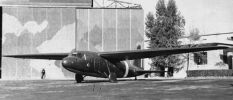
AL12P1131 views    
(20 votes)
|
|
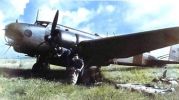
FIAT BR.20 "Cicogna"582 viewsThe Fiat BR.20 Cicogna was the standard Italian bomber of the mid to late 1930's, but it proved to be already obsolete during the French campaign during Italy's entry into World War Two. This bomber was first proposed by Celestino Rosatelli , who envisioned a standardized bomber, in 1934. The two engine BR.20 was first flown on 10 February 1936 at Torino Alitalia and the first 20 units were delivered on 26 November 1937.
Although the aircraft looked realtively sleek and modern, it was already outclassed by other competitors. Nevertheless, a total of 234 BR.20's, 279 BR.20M's and 15 BR.20Bis were built. The BR.20M (Modified) and the BR.20Bis were unique to the original in the change of nose section and engines. These aircrafts were operated in Malta, Battle of Britain, Yugoslavia and the Balkans.
    
(12 votes)
|
|
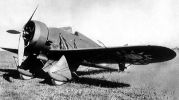
Breda Ba.27708 viewsLow-wing fighter monoplane, with struts and bracing wires, an open cockpit and fixed landing gear. The original mixed construction version was unsatisfactory. It was completely redesigned with an all-metal construction. It was still rejected by the Italian air force, but 11 were built for China.     
(9 votes)
|
|
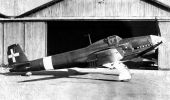
breda Ba.201796 viewsSingle-seat dive bomber. The Ba.201 was a clean low-wing monoplane with an inverted gull wing. It was highly praised by test pilots, except for a disappointing maximum speed. But all available Daimler-Benz DB 601 engines were to be used for fighters, and the Ba.201 was abandoned. Two built.     
(14 votes)
|
|
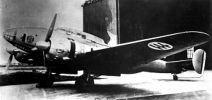
CANT Z 1018 Leone886 viewsIt was clear from the beginning of the flight test program that the performance of the Leone was so high that a production order was certain. This materialized in 1941 in the form of a contract for 300 aircraft to be powered by two Alfa Romeo 135 RC.32 or Piaggio P.XII RC.35 engines, depending on availability. In the event that the Alfa Romeo radial engine was available in larger quantities, and production started in 1943 with a powerplant of two such engines. By the time of the Italian armistace in 9/43 however, deliveries had reached only 10 pre-production and five production warplanes, and a few of these machines saw limited service with the 101st Bombardment Group. Such was the potential of the basic design that two important derivatives were proposed. The first of these was a heavy fighter was a fixed forward armament of 7 20mm cannon as well as a defensive outfit based on three 12.7mm trainable machine guns. The second was a night-fighter with German Lichtenstein SN-2 radar with the antenna in the nose.    
(17 votes)
|
|
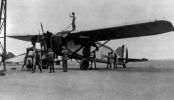
Caproni Ca.101804 viewsThis light bomber for 'colonial' warfare was used in the invasion of Ethiopia. It was a larger development of the Ca.97.     
(9 votes)
|
|
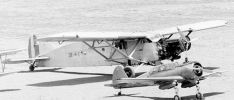
Caproni Ca.111909 viewsUtilized in the colonies in Africa for postal transportation. Internal structure covered in wood. Single-engined development of the Ca.101, used mainly as utility transport. Some had float landing gear. 149 built.     
(8 votes)
|
|
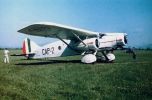
Caproni Ca 133902 viewsThe Ca 133 was modernised version of the Ca 101, cleaned up aerodynamically and given improved engines in an attempt to prolong the type's career as an 16 passenger airliner and second line or "colonial" bomber and transport. Bomber aircraft deployed as military transports, with an interior fitted out to accommodate 18 fully equipped troops, were redesignated Ca i33T and, similarly, conversions for use in an ambulance role were designated Ca 133S. In 1938 a small number of an improved version of the Ca 133 was introduced under the designation Ca 148, serving initially in East Africa, and some survived to fly with the post-war Italian air force.    
(19 votes)
|
|
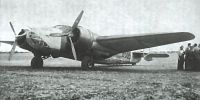
Caproni Ca 135771 viewsThe prototype made its first flight in 4/35 powered by two 800 hp Isotta-Fraschini Asso XI RC Vee engines and driving a wooden two-bladed propeller. The propeller was soon exchanged for a three-bladed metal propeller subsequently accepted for all production versions. The Italian air force felt the Ca.135 had potential and in 1936 ordered 14 examples of the Ca.135 Tipo Spagna (Spanish model), presumably as it was intended to undertake an operational evaluation in the Spanish Civil War. However, none of the aircraft served with the Italian air force in Spain. Trials revealed that the Fiat engines were unreliable and failed to improve performance as significantly as the Piaggio engines, so the few Fiat powered bombers were withdrawn from front-line service and transferred to bomber schools. Thus production of the Ca.135/P.XI was undertaken for a sole export customer, which was the Hungarian air force that received 100 of the type in 1939 and 1940. These aircraft operated with limited success against the Soviets.    
(16 votes)
|
|
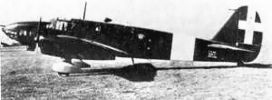
Caproni Ca.309692 viewsSmall twin-engined reconnaissance bomber. The Ca.309 was a low-wing monoplane of mixed construction and with fixed landing gear. 243 were built.     
(9 votes)
|
|
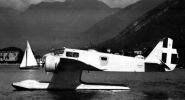
Caproni Ca.316809 viewsship-borne maritime reconnaissance float aircraft, Catapult reconnaissance seaplane version of the Ca.309 series. 14 built.     
(7 votes)
|
|
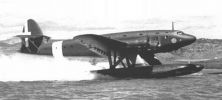
CANT Z 511 Long Range Hydroplane889 viewsThe Cantz 511 Long Range Cargo Hydroplane was first designed by Fillipo Zappata. The first flight took place in Monfalcone (Trieste, north-eastern Italy) in October 1940. It's first operational start took place in February 1942 (Italian territory). On January 1942, the hydroplane had to be employed on different long range routes, as the war against the United States prevented the civil use of CANTZ511 in the Atlantic area. Some had the odd idea of a spectacular mission in the skies of New York, launching one ton of tri-coloured leaflets. Some others thought about a non-stop Rome-Buenos Aires raid (8000 km!). None of these projects was carried out. And it was a real pity, as the test pilot Mario Stoppani - between the end of February and the beginning of March 1942, during the last trials - succeeded in taking off and landing (full loaded) with very rough sea, with 1.5 metres high waves and winds blowing at 55-65 kmh.
    
(12 votes)
|
|
|
|